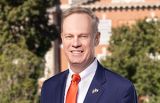NASA Data Flaw From International Space Station Sensors Corrected By A 17-Year Old Student
ByMiles Soloman, a 17-year old A-Level student from Tapton School in Sheffield, UK, emailed NASA to tell them that the radiation sensors on the International Space Station (ISS) have been giving false readings. NASA was quick to respond in sending its appreciation for Soloman's feedback and invited the British student to help them to analyze and resolve the issue.
Soloman's keen curiosity and attention to detail made him spot the error while sifting through spreadsheets of the ISS radiation readings, as part of the TimPix project from the Institute for Research in Schools (IRIS), giving UK students the opportunity to work on real data from NASA's ISS.
According to the BBC, Miles went straight to the bottom of the list to search for the lowest energy reading. His teacher and head of physics, James O'Neill said they were in discussion about the data when Miles perked up to ask why there is a -1 energy reading on the sheet.
They deduced, the radiation sensors, were recording a -1 energy reading even when there is nothing being detected. Miles pointed out that "you can't have negative energy." NASA previously believed that the negative numbers randomly crops up once or twice a year; however, the A-level student noted that the anomaly pops up multiple times a day.
Soloman then brought his findings to the attention of the space agency by sending an email to University of Houston professor Larry Pinsky, who works with NASA on the radiation monitors. Professor Pinsky said the finding was appreciated more so than it being embarrassing, TechnoBuffalo reported.
It might look like a minor feat what Soloman discovered, however, having the right shielding and sensor readings is crucial for any mission outside the protective mantle of the Earth. Incorrect data could potentially put the lives of astronauts in peril while in space.
Professor Becky Parker, of the Institute for Research in Schools, which runs the TimPix project, commented that Soloman's experience could help get more students attracted to STEM subjects. STEM makes the science more applicable in real world settings and less theoretical.
Miles, for his part, said, he is not out to prove NASA wrong, adding he wants to work with NASA and learn from them.
© 2026 University Herald, All rights reserved. Do not reproduce without permission.








